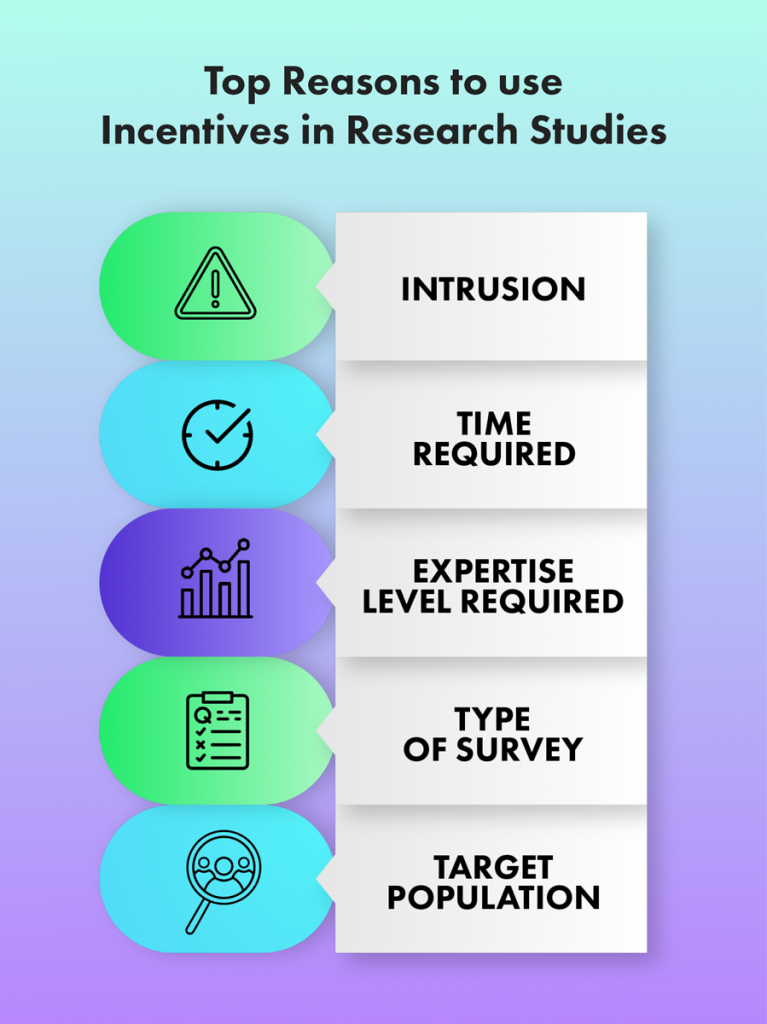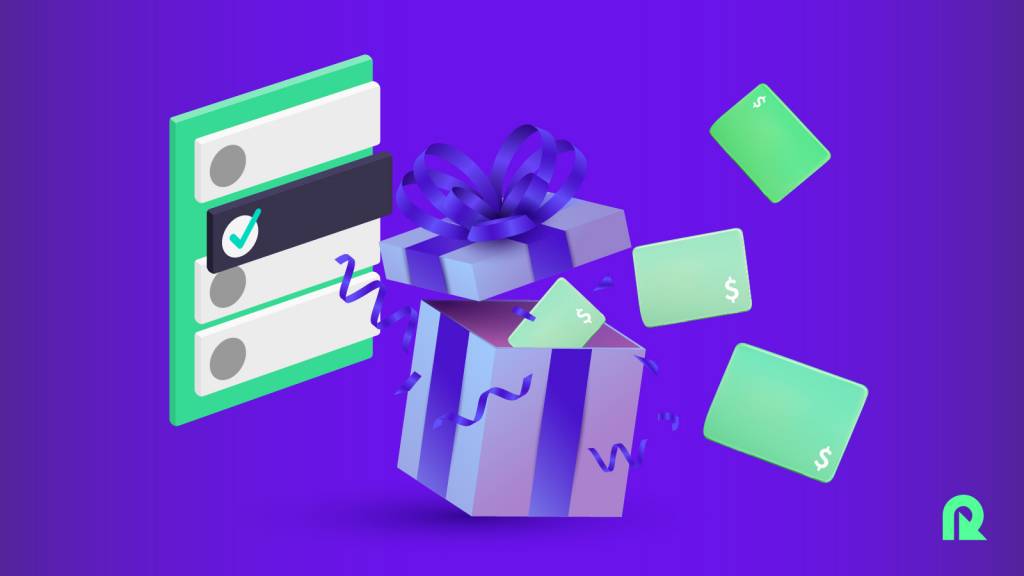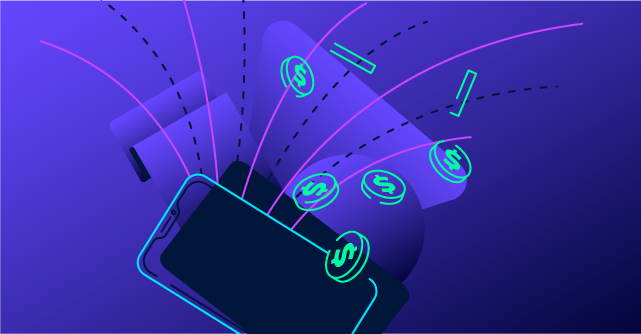Research study gift cards have become increasingly popular among research agencies, businesses, and academia, which have all discovered that incentives are often needed to improve response rates and response completeness in market studies.
Regarding the usefulness of incentives in surveys, a 2017 study published by the National Library of Medicine discovered that the likelihood of returning a survey increased by 30% when accompanied with an incentive offer. Furthermore, the number of returned surveys increased by 18%.
A 2023 study published on PLOS One also discovered “a significant increase in response rate in the incentive group compared to the control group, irrespective of the incentive methods.”
With gift cards becoming broadly popular, it is no wonder that they have also been adopted as incentives for completing surveys. Large and established companies like Google, Microsoft, and P&G have all used gift cards to improve response rates to their surveys.
In what follows, we consider how you can also use gift cards as incentives for participation in research studies and surveys. We’ll cover:
- The need for incentives for participation in research studies and surveys
- The use of gift cards for research participants: Examples
- How to use research gift cards successfully
- How to start incentivizing market studies and surveys
[Do you want to access multiple gift cards from hundreds of retailers so you can maximize response rates to your surveys? Sign up for Reloadly or contact us to learn more about how we can improve your research studies.]
1. The need for incentives for participation in research studies and surveys

Intrusion
Everyone is busy with one thing or another. Therefore, when a researcher interrupts them to fill out a survey, there is a need to compensate them for the opportunity cost of the time they will spend filling the survey forms.
This is especially true for researchers – academics, research agencies, marketing agencies – who do not have any existing relationship with the research subjects.
Of course, it is possible to get some responses even without any incentive. However, research has shown that using them can improve response rates significantly.
The incentive does not even need to be very significant. A study published by Health Services Research found that the response rates for a $5 reward and a $2 reward were very close and that the quantity of the incentive did not affect the quality of the data.
It seems then that what matters ultimately is that people want to feel that the organization behind the research values their time.
Companies who have built an army of loyal customers around their brand might find it easier to collect data without offering incentives. In fact, the loyal customers will be happy to complete the surveys.
This means then that the need to offer incentives depend on the intrusiveness of the survey request (from the respondent’s point of view).
However, even these companies sometimes have to enter uncharted territory to get data that loyal customers cannot provide. In that case, offering incentives will be very important.
Time required
While a one-minute survey may not require an incentive, a 10-minute survey will often require it (all other factors held constant).
Expertise level required
A research study targeting busy surgeons or attorneys will tend to require incentives to get any decent response rate. However, a survey targeting university students may not require such incentives.
Even when an incentive is required, the expertise needed for the survey will result in a different amount of incentives. A study of people who use certain products will require less incentives compared to one targeting surgeons.
Type of survey
If a company offers incentives for its customers to write reviews, there is a risk that the responses will be biased in favor of the company. While this might look like a good thing, in reality companies need the not-so-good reviews as incentives for innovations and improvements.
On the other hand, if an independent research company or an academic is the one carrying out the survey, a reward will be less likely to skew the result in favor of a company.
Similarly, bringing people together for focus groups might require more incentives compared to them just filling out a form on their phones.
Target population
If the researcher is targeting a population that is traditionally known for responding positively to survey demands (university students, for example), an incentive might not be needed.
Conversely, a population known for its indifference to surveys (say busy office workers) may perform much better with an incentive.
If a researcher has decided to use an incentive, there are two types that can be deployed: monetary and non-monetary incentives. The former includes cash payments, gift cards, coupons, airtime, among others while the latter include freebies (say free products or digital resources like an e-book).
However, it’s the monetary incentives that perform best. “When it comes to increasing response rates, previous research has shown that cash is king, boosting survey response rates the most,” according to Survey Monkey. “And non-monetary incentives like a thank-you gift aren’t as effective as monetary incentives when it comes to increasing response rates.”
2. The use of gift cards for research participants: Examples
Gift cards have become popular as a form of monetary reward. There are at least three reasons for the popularity of research study gift cards.
First, for businesses with ecommerce stores, gift cards can help improve response rates while also increasing sales. If a business sends money to study participants they may not spend it on the business’ products. However, if they send their own gift cards, then the recipient will spend. And it has been shown that for 90% of shoppers, gift card purchases typically exceed the amount on the gift card; that is, they spend more than the value of the gift card.
Second, researchers that don’t have their own stores can still offer popular gift cards like research study Amazon gift cards that will appeal to a lot of people. An academic institute or research agency can also buy gift cards and distribute them to study participants. You can’t do this with coupons.
Third, researchers can offer a wide range of gift cards (Amazon, Apple, Visa, Mastercard, Target, eBay, etc.) so that no respondent will have to settle for a research incentive they don’t want. A free ebook might be nice but some people don’t care about it; a free product might appeal to some but not to others. Gift cards solve this problem, and offering many of them works better.
Now, let’s focus on examples of research study gift cards in action.
Capterra
Capterra is an online marketplace connecting buyers and sellers of various software solutions.
In 2019, they offered $10 digital gift cards for respondents to write a review of software solutions they are using at the office (including Zapier, Hubspot, FreshBooks, Mailchimp, etc.). The program was opened to anyone who was using any of the 30,000 software solutions listed on their marketplace.
Mom Beach Blog
In 2021, this blog, which is dedicated to helping mothers achieve success and life balance, offered those on its email list the opportunity to fill a survey to earn some rewards.
Unlike the example above, it combined two different rewards: all respondents will get a time-sensitive coupon code and one of them will win (in a sweepstake) an Amazon gift card of $25.
This is often referred to as a hybrid research incentive.
Walmart
Walmart, the retail store, provides another example of a hybrid incentive.
It provides a study gift card for 750 customers willing to participate in its customer experience survey.
There is the general reward (First Prize) of $100 electronic gift card for all participants and then a special reward (Grand Prizes) of $1,000 electronic gift cards for five lucky customers.
Swagbucks
Swagbucks is a website where people can earn money by filling survey forms and executing other tasks like surfing the web and playing video games.
For every survey filled (or other tasks accomplished), the respondent will earn some points. Once the points reach a threshold, the respondent will be able to redeem them for gift cards.
The advantage of a site like Swagbucks is that those interested can continue to find new research studies to participate in to earn some consistent side income.
Our last example is from LinkedIn. In the example below, they offered 750 Indian rupees ($9USD) worth of incentives for select individuals in India.
What made this interesting is that they provided multiple options for redemption of the incentive. They provided three different types of gift cards (Infibeam gift certificate, Book My Show gift voucher, Amazon gift card), a Paypal transfer, or a donation to the respondent’s charity.
This type of survey will tend to have a higher response rate since respondents can choose which of the options provided suits them the most.
3. How to use research study gift cards successfully
Our focus now is to consider how you as a researcher can successfully use gift cards to improve your study. We’ll explore five important points:
Determine if gift card-supported research is needed
In a previous section, we identified five reasons why incentives are often required.
The first step is to determine if you need an incentive to begin with. If you are dealing with people who are familiar and comfortable with you, don’t require expertise to fill the form, are typically eager to respond to surveys and the survey won’t take their time, you might not need an incentive.
However, if any of these factors do not hold, an incentive may be needed.
Nevertheless, you might still decide to give incentives even when you don’t need it. Also, if you assume you don’t need incentives and the response rate is insufficient, you can then decide to introduce incentives to increase response rate (but you should also consider if the original respondents might despise you for that).
Select the best gift cards for research participants
What are the best gift cards for research participants?
It seems Linkedin may have among the strongest offers. If the researcher is an online store and they offer their gift cards alone, some people will not respond because they prefer an Amazon card, for example. On the other hand, offering an Amazon card for everyone might leave out those who would prefer another card.
Since maximizing response rate is key, it might be better to work with a gift card reseller so you can offer multiple gift cards and meet the needs of diverse respondents.
If you are an online store, you might also include your gift cards as one of the options. Apart from the fact that some will love it, there is also the advantage of higher sales.
Set a budget
Your budget will depend on the target participants, the expertise required, and the number of participants desired.
The cost of incentives for 1,000 general office workers is not the same as when you are targeting 2,000 busy surgeons. Ensure you plan accordingly.
Use promised rather than prepaid incentives
Prepaid incentives are incentives that can be accessed before the survey has been completed. Promised incentives, on the other hand, are incentives for completing surveys.
Unless you are dealing with people already loyal to your brand, prepaid incentives will likely underperform. Generally, promised incentives, which motivates survey completion, are the best.
Ensure the reward is easy to claim
Don’t make respondents jump through hoops before they can claim their rewards. And if there are any extra forms, they must be communicated before they sign up for the survey.
When rewards are easy to claim, it creates good faith. You can harness this good faith in the future to get responses to a new survey without incentive or with a less-valued one.
4. How to start incentivizing market studies and surveys
If you are only doing a once in a blue moon survey, then you can just work with a gift card reseller to provide multiple study gift cards to respondents.
However, if you are learning how to incentivize survey responses as an executive in a market research company, think tank, company or NGO that relies on surveys a lot, or in an academic institution, there is a better way.
Instead of working with resellers, you can become a sort of reseller yourself (except that you are giving out egift cards to people rather than selling them).
The advantage of this is that you get to access and buy multiple egift cards from multiple retailers and easily send them to respondents.
This is the solution that Reloadly provides.
By integrating the Reloadly API or WordPress plugin to your website or app, you will get access to 14,000 gift cards from over 300 brands that you can buy and then send to respondents across the globe.
With this, you can create any research study gift card program at any time.
[Are you ready to easily reward your survey respondents with gift cards? Sign up for Reloadly to access a wide variety of cards or contact us to learn more about how you can get started.]
Takeaways
- Market research companies and other researchers have found that incentives can help them improve response rates to surveys.
- Intrusion, time required, expertise required from the human subjects, type of survey, and target population are factors that will determine if there is need for incentives for completing surveys.
- To maximize response rates, it is better to offer multiple gift card options so that respondents can make their choice.
- Organizations that conduct research surveys regularly (multiple surveys in a calendar year) should consider becoming gift card retailers.



